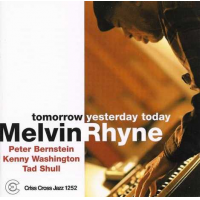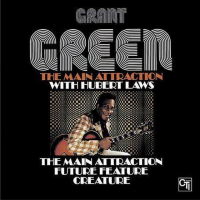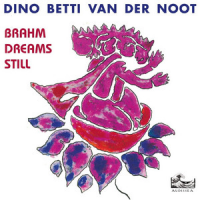Home » Jazz Articles » Liner Notes » Paul Quinichette: Like Basie
Paul Quinichette: Like Basie
Unlike this present state of affairs, there was a time in the '50s and '60s when a longing for earlier jazz styles produced a good number of outstanding albums. Most prevalent was an effort by labels to record elder statesmen steeped in the Dixieland tradition, a movement that ultimately proved quite valuable not only for kindling the careers of many men who had gone unrecorded for years, but also for leaving us music of this style in a fidelity that was easier to listen to and admire.
Swing musicians who had previously fallen out of favor with record labels as bop and its various derivatives became the new thing also benefited during this period of rediscovery. Although he had already been a working musician and veteran of many big bands during the '40s, tenor man Paul Quinichette was just one of many swing era musicians who was able to lead his own sessions and appear as a sideman on many other projects during these heydays of the late '50s. He also took advantage of his previous experience with Count Basie and his stylistic similarity to Lester Young to front three special undertakings in the spirit of the Basie tradition, the one you're currently holding in your hands being the most obscure of the lot.
But before we get too ahead of ourselves, let's put the session at hand into perspective. Although much has been said and written to suggest Quinichette was merely a Lester Young clone, down to the "Vice Pres" that became his moniker, the fact remains that he was in truth a vital player who just happened to work a few of Young's more popular devices into his own vernacular. Two albums from 1957 best illustrate this point, with Quinichette holding his own alongside John Coltrane (Cattin' with Coltrane and Quinichette) and Charlie Rouse (The Chase Is On). While Quinichette's swing sensibilities are certainly audible, he's no less an engaging soloist even in the company of these more contemporary stylists.
Having proven himself capable of delivering the goods regardless of genre, it's curious to note that Quinichette chose to emphasize music from an earlier time even as this served to further reinforce the notion that he was following Young's lead a tad too closely. Although he played with the Count Basie band for only about a year in the mid '50s, Quinichette never tired of mining trinkets from the band's book. In the fall of 1957 he would lead For Basie, the first of two retro projects for Prestige, followed the next year by Basie Reunion. Coming hard on the heals of the later, Bob Brookmeyer's Kansas City Revisited done for United Artists in October of '58 would also feature Quinichette in a tribute to Basie's iconic swing. Possibly coming about due to his appearance on this set, the tenor man would go on to lead his own session for the label some five months to the date.
Like Basie essentially brings things full circle by featuring an ensemble made up principally of former Basie sidemen, with trumpeter Shad Collins, Eddie Jones, Jo Jones, and Freddie Green taking part in one or more of Quinichette's previously mentioned projects. Interestingly enough, pianist Nat Pierce not only appeared on the two Prestige sessions but is also on the Brookmeyer sides and would go on to participate in many more swing retrospectives including the classic 1961 album Jazz Reunion with Pee Wee Russell and Coleman Hawkins.
With four trumpets and trombone in the lead, Quinichette leads a brass heavy nonet that sounds surprisingly close to a full-fledged big band and the program includes two early Basie numbers, namely "Jump the Blues Away" from 1941 and "Jump For Me" from 1939. Not much is needed in terms of a detailed track analysis. Music of this variety transcends time and its ebullient nature makes its extremely accessible even as it possesses much in the way of substance. The longest track of the set, "The Holy Main" brings forth some particularly noteworthy blowing from Quinichette, his low register squawks not unlike some of the very same devices that would make Gene Ammons a hot commodity in the early '60s.
Sadly, Quinichette would not be as lucky as Ammons, quickly falling out of favor with listeners more attuned to the hard bop practitioners of the period. In fact, the saxophonist would leave the music business altogether not long after Like Basie appeared and a try for a comeback in 1977 would be cut short by his death a mere six years later. Far less heard than even heard about, Like Basie will give fans of swing music much to savor and hopefully its reissue will help earn the Quinichette legacy the respect it deserves, something that seems to have eluded the man while he was on this planet.
Liner Notes copyright © 2026 C. Andrew Hovan.
Like Basie can be purchased here.
Contact C. Andrew Hovan at All About Jazz.
An avid audiophile and music collector, Chris Hovan is a Cleveland-based writer / photographer / musician.
Track Listing
Jump The Blues Away; Jump For Me; Like Basie; The Holy Main; Big D; P.Q.
Personnel
Paul Quinichette
saxophone, tenorAl Grey
tromboneHarry "Sweets" Edison
trumpetSnooky Young
trumpetDick Vance
trumpetLester 'Shad' Collins
trumpetNat Pierce
pianoFreddie Green
guitar, acousticEddie Jones
bass, acousticJo Jones
drumsAlbum information
Title: Like Basie | Year Released: 2006 | Record Label: Mighty Quinn Productions
Tags
PREVIOUS / NEXT
Support All About Jazz
 All About Jazz has been a pillar of jazz since 1995, championing it as an art form and, more importantly, supporting the musicians who make it. Our enduring commitment has made "AAJ" one of the most culturally important websites of its kind, read by hundreds of thousands of fans, musicians and industry figures every month.
All About Jazz has been a pillar of jazz since 1995, championing it as an art form and, more importantly, supporting the musicians who make it. Our enduring commitment has made "AAJ" one of the most culturally important websites of its kind, read by hundreds of thousands of fans, musicians and industry figures every month.




























